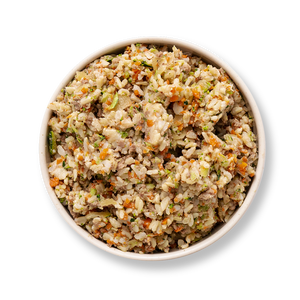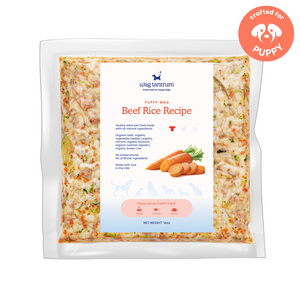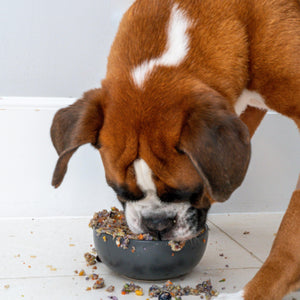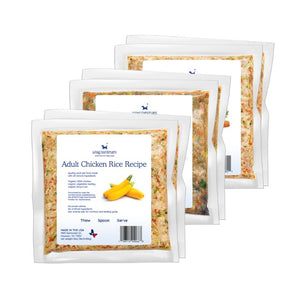How Your Dog's Diet Can Impact Their Dental Health
Owning and caring for dogs is a wonderful experience, but paying attention to their health is critical. After all, the dog can’t walk itself to the vet when it doesn’t feel good, nor can it brush its own teeth.
Luckily, dog owners can learn about the potential health issues to watch for, putting together solutions before the problems grow. For example, oral hygiene is one of the many health problems your pet can face, but paying attention to their diet will make a difference.
Read our guide below to learn how your dog’s diet can impact their dental health. Although we’re going to tackle some deep medical topics, the information below aims to be valuable and digestible for newcomers instead of overwhelming and brain-scrambling.
Periodontal Disease
First, let’s discuss periodontal disease, which refers to ailments including periodontitis and gingivitis. Unfortunately, problems such as periodontitis are a substantial side effect of poor oral health in dogs and humans alike. Furthermore, these inflammatory diseases go by a more familiar name you’re likely aware of: gum disease. As avoidable as it is, this problem isn’t rare for dogs to experience.
Humans are prone to gum disease due to bacteria accrual after eating and drinking. For this reason, we routinely brush our teeth throughout the day, removing harmful plaque in the process. Suffice it to say, when humans neglect routine brushing, bacteria can fester and cause more extensive problems.
Side Effects
Dogs require similar care because after eating, they too accrue bacteria in their mouths. The longer plaque lingers in your pet’s mouth, the more damage it does to your dogs’ gums.
For this reason, common signs of periodontal disease in dogs are bad breath and gum inflammation; even bleeding can be a side effect of prolonged plaque build-up. Sadly, this issue is nothing new for dogs, with studies on the subject dating back many years.
Beyond oral irritation, periodontal disease can cause organ problems throughout your dog’s body, so preventing it is critical. Thankfully, as you’ll learn below, providing your dog with an ideal diet can prevent periodontal disease from striking.
Dog Diets & Oral Health
Providing your dog a healthy diet has a profound effect on their lives, from helping their fur look wonderful to ensuring their organs can function correctly every day. Although bacteria enters a dog’s mouth through food, certain foods can be beneficial to their health instead of damaging.
A common recommendation you might hear is that dry dog food, including kibble, will scrape away the gunk on your dog’s teeth. Suffice it to say, relying on kibble to clean your dog’s teeth is not an excellent cleaning method and can do more harm than good.
By relying on dry dog food, you risk introducing your pet to excessive carbohydrates that can promote gum disease. In fact, a thorough study from 2019 dove into the link between carbohydrates and gum inflammation, showcasing how the former can promote reduced jaw bone height in rodents, which further leads to reduced oral health.
Materials for Improving Your Dog’s Dental Health
Now you know more about how your dog’s diet can impact their dental health daily, but there’s still a bit more to learn. With the doom and gloom of oral ailments out of the way, we can move on to the various great solutions.
First, let’s start with teeth brushing, a very straightforward and beneficial activity for your dog. Daily brushing with a soft toothbrush and a toothpaste for dogs will help your pet’s teeth and gums remain healthy. Dogs aren’t always fans of teeth brushing, so find a good canine toothpaste with a flavor to ease them into the process, ensuring it gets the help it needs to stay healthy every day.
A Snack & a Hygiene Tool
Although using kibble to improve dental health is misguided, that certainly doesn’t mean your dog has zero defense against gum disease. For instance, one of the best oral hygiene methods for dogs involves a snack they’ll love: a bone with raw meat.
Raw meaty bones from chickens and other animals aren’t just fun for pets to play with. In fact, the action of chomping away at the meaty bone helps scrape and clean away unhealthy plaque build-up. An important note about feeding raw meaty bones to dogs is to keep the “raw” part in mind. Cooking the meaty bone might sound nice, but it affects how the bone breaks in the dog’s mouth.
After cooking, the animal bones become brittle and splinter in a dog’s mouth, which can cause horrible problems throughout their body. Thankfully, various raw bones provide a safe and welcoming snack for dogs.
Also, although finding thick bones such as cow legs sounds like a special treat, they can be too thick for dogs to safely chew, hurting their teeth instead of cleaning them thoroughly. Don’t worry; as long as the density of the meat and bone is suitable for your pet, the experience will be helpful instead of harmful.
A Better Diet, a Better Dog
Bones are an excellent snack, but dogs need lean, healthy meals throughout the day too. Luckily, the ingredients in dog food have a surprisingly positive effect on a dog’s dental health. For instance, meat products are a great source of amino acids.
By consistently providing dogs with a suitable source of amino acids, you can destroy the bacteria and sugars that try to weaken their dental health. For this reason and more, we offer a monthly dog food subscription that provides options such as beef and chicken. As you can see, keeping your pet’s mouth healthy is as easy as supplying them with a nutritional and balanced diet.
Now that you know the essentials, you can help any dog you own benefit from this walkthrough of canine dental health information and suggestions. Of course, some of the deeper medical topics above might seem daunting to newcomers.
However, don’t worry; the more you work with these processes, from a better diet to routine brushing, the sooner you’ll see how straightforward it is to keep dogs healthy. To put it simply, with a better diet, you’ll have a better dog who can worry less about gum disease, bad breath, and beyond.









